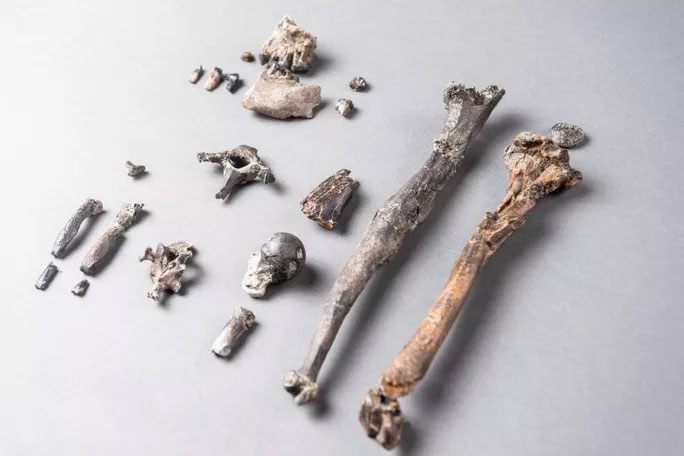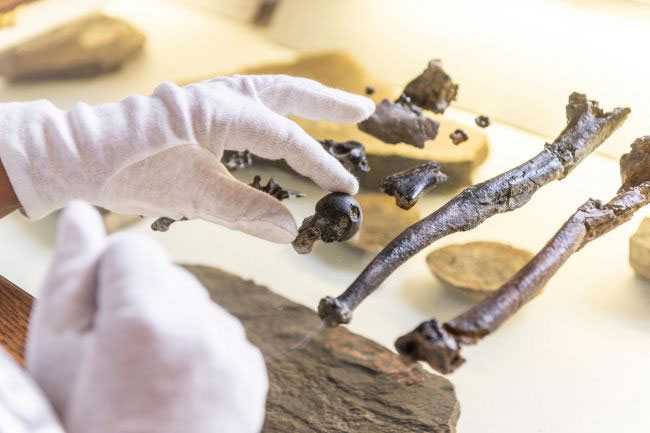Marvel at the remains of strange creatures with human legs and gibbon arms
The fossilized 11.62 million-year-old fossil remains of German researchers describe it as being like an ape and a human in one.
The team, led by paleontologist Madelaine Böhme from the University of Tübingen Eberhard Karls (Germany), "unveiled" the amazing remains of the creature they named Danuvius guggenmosi , after Danuvius' god of the river Danuvius. Celtic - Romans and Sigulf Guggenmos, who discovered the location where the fossils were excavated.

Strange remains have led scientists to a surprising discovery - (photo: Christoph Jäckle).
Fossils are completely preserved, including the bones of the limbs and hands, which reveal the special anatomical structure of this creature, especially the bones of the human leg.
Scientists have painted a picture of a creature with human-like feet to run and the strong hands of apes to pass branches, helping them escape the great predators of the ancient cat family, for example. like the ancestors of tigers, lions . today. The most common way of moving it is to use your hands to pass, while walking with your feet, standing on branches or bundles of vines. This movement is not entirely human and is not entirely like apes.

Scientists are working on specimens - (photo: Christoph Jäckle)
This particular creature has shed new light on the way humans evolved from ancient apes, because it was the evolution of the feet that helped free the hands, from which the hands evolved into ingenious. to use the tool.
Although described as "as a gibbon and a human in one" , the main nature of Danuvius guggenmosi is still an ape. It was not qualified to enter the ranks of Homo - his genus, thought to be more than 4 million years old.
The newly discovered creature is also the missing piece that paleontologists seek to supplement the evolutionary record of human ancestors. Since 1970, many ancient gibbon fossils dating from 5 to 13.5 million years have been excavated in Europe and Africa, but none has been fully preserved.
Researcher Böhme said they are continuing to look for other specimens of this creature, and believe it will all lead them to many spectacular discoveries.
- Shock: Catch fish with 3 legs
- Those who go on four legs
- Strange creatures like human blades washed ashore on Australia
- Mysterious remains of women belong to another human species
- Marvel at the unimaginable beauty of strange creatures hidden in the sea
- Announcing new concussions about human origin
- Marvel at strange creatures that know how to spray webs and taps
- Discover 4 strange sea creatures with human-like teeth
- Discovering strange sea creatures suspected of being aliens in America
- People with many ... legs
- Reveal the way the human embryo is formed
- Thousands of strange creatures like jellyfish drifted to the California coast
 Discovered an ancient centipede fossil 99 million years old
Discovered an ancient centipede fossil 99 million years old Discovered bat-like dinosaurs in China
Discovered bat-like dinosaurs in China Discovered a 200-year-old bronze cannon of the coast
Discovered a 200-year-old bronze cannon of the coast Discover 305 million-year-old spider fossils
Discover 305 million-year-old spider fossils